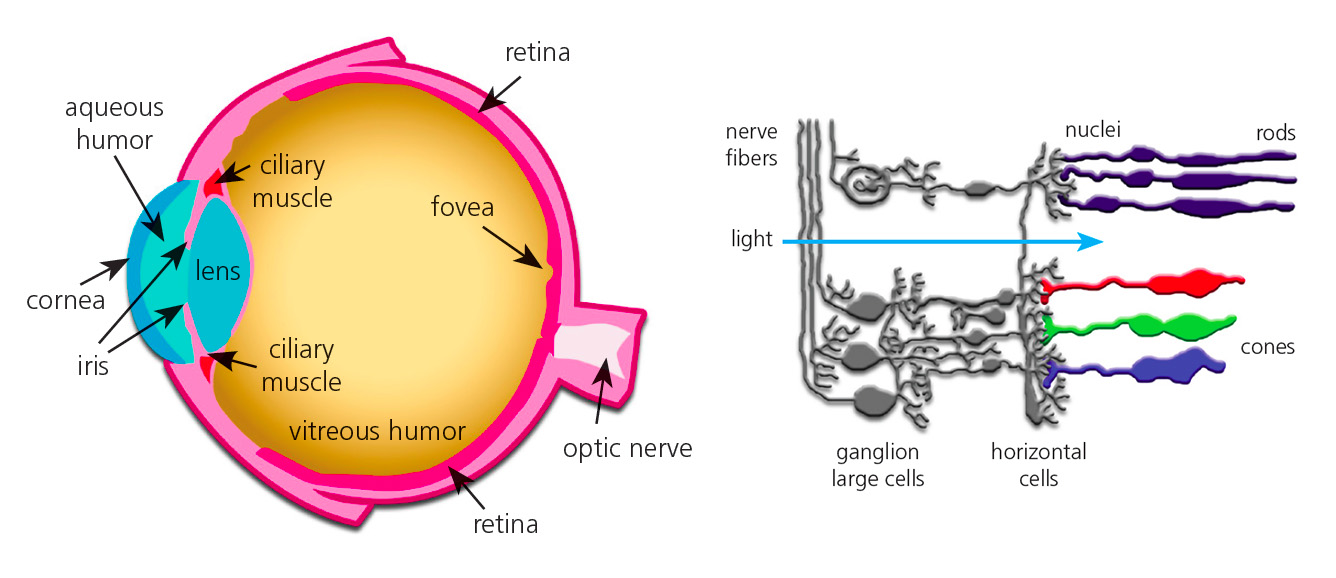The retina plays a crucial role in color vision through specialized cells known as photoreceptors, particularly the cone cells. There are three types of cone cells, each sensitive to different wavelengths of light corresponding to the primary colors: red, green, and blue. Here’s how the retina contributes to color vision:
Photoreceptor Cells: The retina contains two main types of photoreceptor cells—rods and cones. While rods are more sensitive to low light and contribute to peripheral and night vision, cones are responsible for high-acuity vision and color perception.
Cone Cells: Cone cells are concentrated in a small area of the retina called the macula, with the highest density at the fovea, the central part of the macula. There are three types of cones, each tuned to a specific range of wavelengths corresponding to the primary colors of light.
Color Sensitivity: The three types of cone cells are sensitive to different parts of the visible light spectrum: Red cones: Sensitive to longer wavelengths, primarily in the red part of the spectrum. Green cones: Sensitive to medium wavelengths, primarily in the green part of the spectrum. Blue cones: Sensitive to shorter wavelengths, primarily in the blue part of the spectrum.
Color Mixing: When light of different wavelengths enters the eye and stimulates the various cone cells, the brain processes the signals from these cones to create the perception of different colors. The brain integrates the signals from the three types of cones to perceive a wide range of colors.
Color Opponency: Cone cells work in pairs to create what is known as color opponency. The brain compares signals from adjacent cones that are sensitive to different wavelengths. For example, red and green cones work in opposition, allowing the brain to perceive a continuum of colors between red and green.
Color Vision Deficiencies: Anomalies in the function of cone cells can lead to color vision deficiencies or color blindness. The most common types involve difficulties in distinguishing between red and green hues.
Processing in the Brain: The signals generated by the cone cells are sent to the brain through the optic nerve. In the brain’s visual processing centers, these signals are combined and interpreted to create the perception of color.
The retina’s cone cells and their sensitivity to different wavelengths of light enable the brain to perceive a diverse range of colors. The intricate interplay between these cones and their signaling pathways contributes to the richness and complexity of human color vision.
If you’re seeking top-notch care for your retinal health, look no further than Dr. Sonia Maheshwari, recognized as the best retina specialist in Ghatkopar. With a wealth of experience and a commitment to excellence, Dr. Maheshwari is dedicated to providing unparalleled care for various retinal conditions.




